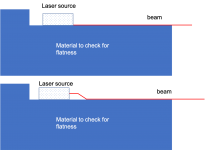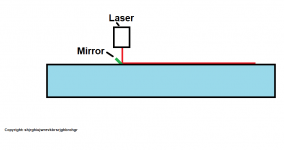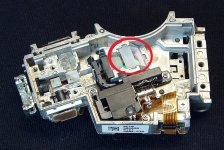I am trying to construct an inexpensive laser flatness detector to bring on my trip to Egypt.
Because of their optics, lasers all tend to be round, so the beam will never exit at the surface that it rests on (yes, you can aim the laser below the edge of the surface, but that won’t work for inner surfaces).
Is there a way to refract the beam so that it skims the surface of and object? Attached diagram illustrates my question.
Because of their optics, lasers all tend to be round, so the beam will never exit at the surface that it rests on (yes, you can aim the laser below the edge of the surface, but that won’t work for inner surfaces).
Is there a way to refract the beam so that it skims the surface of and object? Attached diagram illustrates my question.






